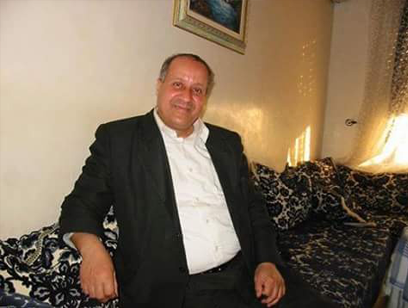In the name of Allah, the Most Gracious, the Most Merciful.
Praise be to Allah, and may blessings be upon our master Muhammad, the opener, the seal, the helper, the guide, and upon his family and companions.
It is well-known that the three books related to the Tijaniyya order, which were written during the lifetime of our master Sheikh (may Allah be pleased with him), namely Jawahir al-Ma’ani (The Gems of Meanings), Al-Jami’, and Rawd al-Muhib al-Fani (The Garden of the Vanishing Lover), were primarily composed and dictated in the desert regions between the Zawiya of Abi Samghun, Shallala, and ‘Ain Madi. Very little of these writings were completed in the city of Fez.
In other words, the Tijaniyya order first emerged in the Zawiya of Abi Samghun in the year 1196 AH, when our master Sheikh (may Allah be pleased with him) was 46 years old. This means that the duration of his leadership over this honorable path spanned 34 years. He spent the first half, i.e., 17 years, in the desert, and the second half, of the same duration, residing in Fez, which was the scientific and administrative capital of Morocco at that time.
What we wish to highlight through this observation is that the three aforementioned works, which remain among the most significant sources of our path to this day, were completed during the first half of the order’s emergence, prior to the Sheikh’s settlement in Fez in 1213 AH.
There are, of course, a few brief fragments written in Fez, but the vast majority of the order’s heritage, its principles, foundations, and teachings, were established during his time in the desert. It is important to note that even during this desert period, not everything was documented. This is evidenced by the statement of the esteemed Khalifa Sidi Haj Ali Harazem in Jawahir al-Ma’ani, where he mentions that what he recorded is merely a small portion compared to what was left undocumented.
However, there is a stark contrast between the period our master Sheikh spent in the desert and the subsequent period he spent in Fez. The latter was far more illustrious and radiant, as it was during this time that he attained the rank of the Qutbaniyya al-Uzma (Supreme Polehood) and the Khatmiyya (Sealing and Hidden Status). In this regard, the earlier periods of his life cannot be compared to this golden period, which was the pinnacle of his spiritual and intellectual journey.
Ironically, this golden period of the Sheikh’s life in Fez was not adequately documented. Instead, the writings and literature of the Tijaniyya order continued to rely on the works produced during the desert period. Some historians attribute this lack of documentation to the passing and absence of key companions, particularly the great knower of Allah, Sidi Haj Ali Harazem Barada Al-Fasi, who left Fez in 1215 AH and passed away near Badr, close to Medina, in 1218 AH. Likewise, the eminent scholar Sidi Muhammad ibn Al-Mishri Al-Subai, whose life alternated between the desert and Fez, passed away in ‘Ain Madi in 1224 AH, just six years before the Sheikh’s death.
On this subject, the scholar Sidi Ahmad Skirej mentions in his writings: “Had the esteemed Khalifa Sidi Haj Ali Harazem lived just ten more years and remained by the side of our master Sheikh (may Allah be pleased with him) in Fez, he would have compiled from his dictations, knowledge, understandings, openings, insights, and subtle wisdoms what no mind could comprehend and no text could encompass. But it was the will of Allah, and He does as He pleases.”
Skirej further points out that there was some neglect by scholars during the Sheikh’s time in Fez when it came to documenting his teachings and dictations. This neglect stemmed from the overwhelming reverence they felt toward the Sheikh, their lack of awareness of the importance of recording his sayings and instructions, or their contentment with what had already been documented during the desert period.
Nevertheless, during his time in Fez, the Sheikh (may Allah be pleased with him) was at the peak of his scholarly and spiritual activity. He was, by inheritance, an unfathomable reservoir of knowledge, as mentioned by the scholar and hadith expert Sidi Muhammad Al-Hajjouji Al-Hasani in the first volume of his book Ithaf Ahl al-Marateb al-‘Irfaniyya. While translating the biography of the scholar Sidi Ahmad Bannani (the father of Sidi Ahmad Bannani Jr.), Al-Hajjouji records that Sidi Ahmad Bannani once said: “Our master Sheikh (may Allah be pleased with him) would sometimes dictate to me knowledge so profound that I would consider myself as though I were ignorant, unable to grasp the depths of his truths.”
It is worth mentioning that the only work compiled during this latter period in Fez was Al-Ifadah al-Ahmadiyya li-Murid al-Sa’adah al-Abadiyya (The Ahmedian Benefit for Seekers of Eternal Happiness), authored by the blessed Sharif Sidi Al-Tayyib Al-Sufyani (may Allah have mercy on him). While this book does not reach the level of the three foundational works, its significance lies in the period it covers, albeit its documentation being primarily brief notes and reports.
Notably, the scholar Sidi Muhammad Al-Hajjouji is also known to have compiled a book containing verified fatwas, dictations, and sayings of our master Sheikh (may Allah be pleased with him) during his time in Fez. I had the opportunity to read large excerpts from this work at the home of the author’s son, our Sheikh Sidi Muhammad. Unfortunately, this book was presented as part of the manuscripts displayed at the first Tijaniyya conference in Fez in 1983. After the conference concluded, and the books were returned to their owners, this invaluable manuscript disappeared without a trace, despite our lengthy and persistent search for it over the years. To Allah belongs the command before and after.




